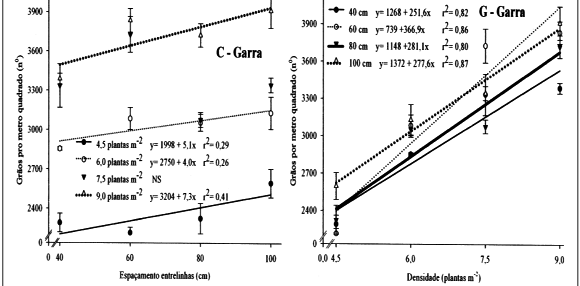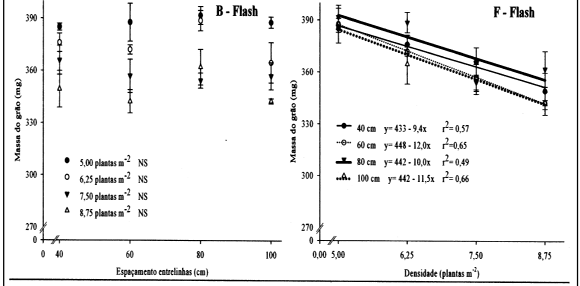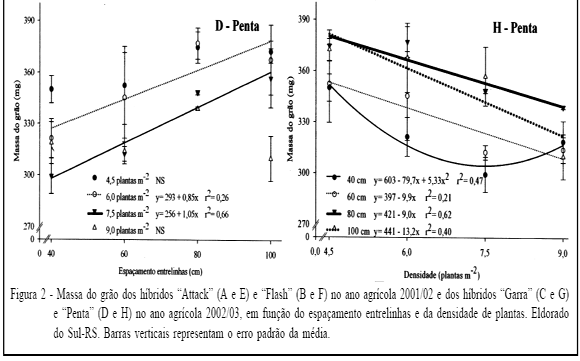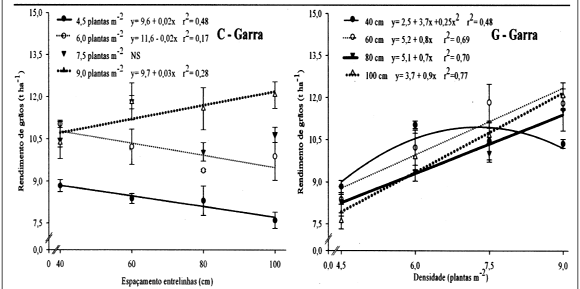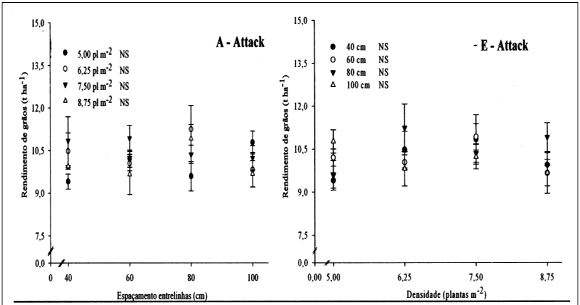The amount of solar radiation intercepted by the canopy has influence on maize grain yield and it can be enhanced by reducing row spacing and/or increasing plant density. This research was carried out aiming to evaluate the response of four irrigated maize hybrids to variations in row spacing and plant density, under high management level. Two experiments were performed in Eldorado do Sul, RS, Brazil. In 2001/02, treatments had composed by two maize hybrids (Flash and Attack), four plant densities (5.0, 6.25, 7.5 and 8.75 plants m-2) and four row spacings (40, 60, 80 and 100cm). In 2002/03, treatments were set as two maize hybrids (Garra and Penta), four plant densities (4.5, 6.0, 7.5 and 9.0 plants m-2) and four row spacings (40, 60, 80 and 100cm). The reduction in row spacing from 100 to 40cm and the increase in plant population from 4.5-5.0 to 8.75-9.0 plants m-2 has more pronounced effects on grain yield for the erect leaf hybrids Flash and Garra. Conversely, grain yield of decumbent leaf hybrids Penta and Attack was not altered by variations in plant density and row spacing. The effects of narrow row spacing on the agronomic characteristics were lesser magnitude that the obtained ones with variations in plant density.
Zea mays; grain yield and its components; cultivar; high management level


